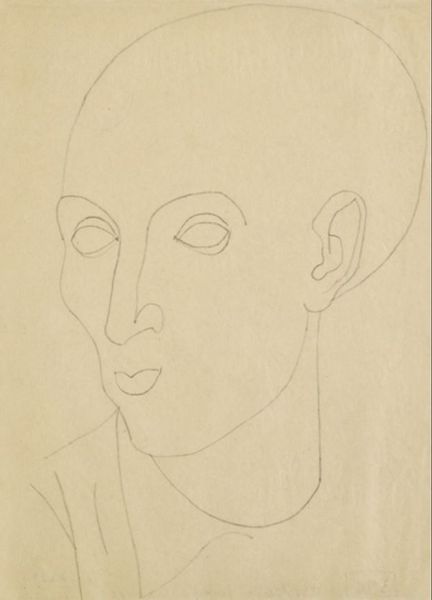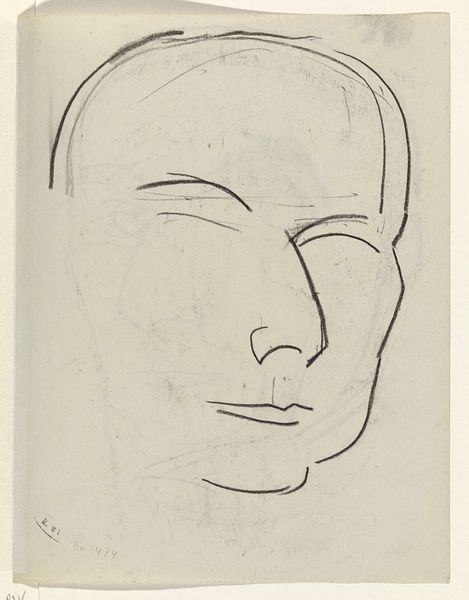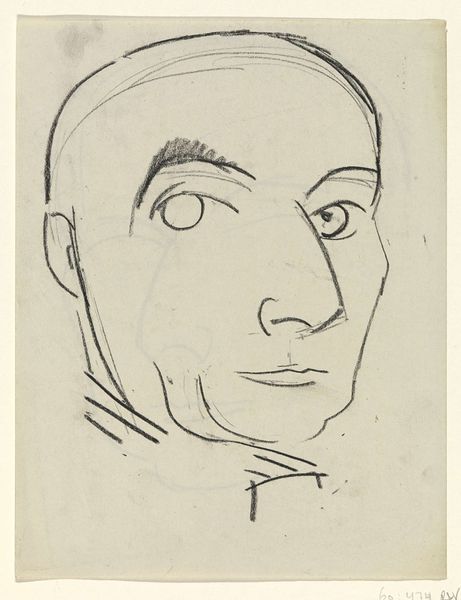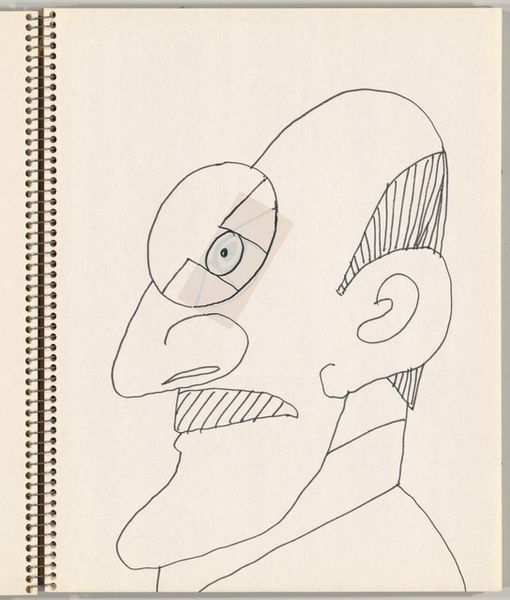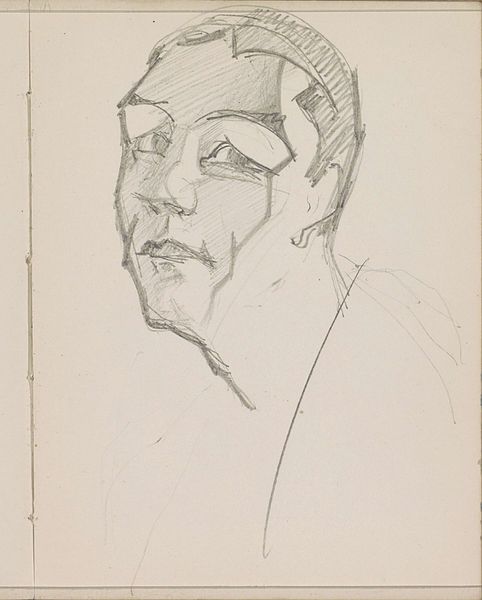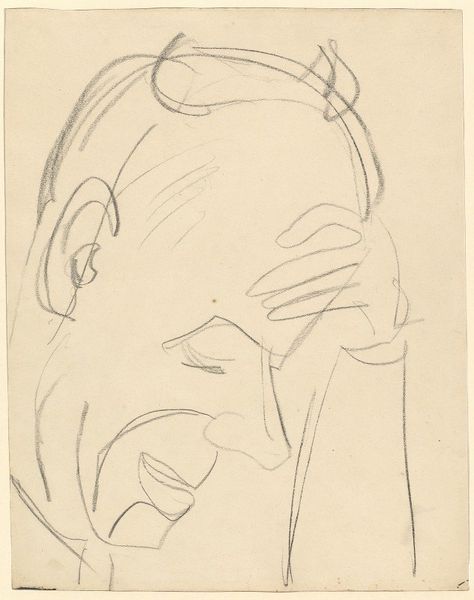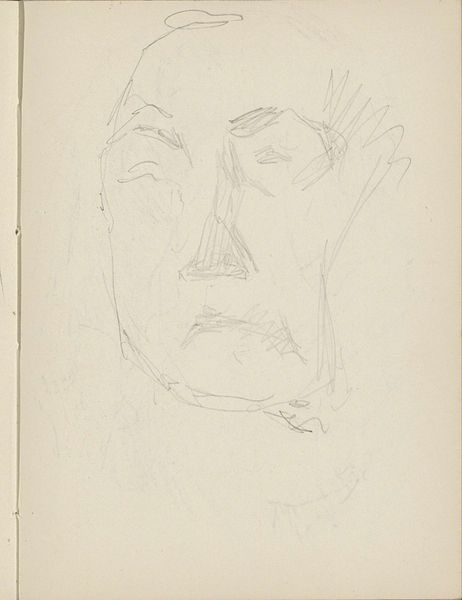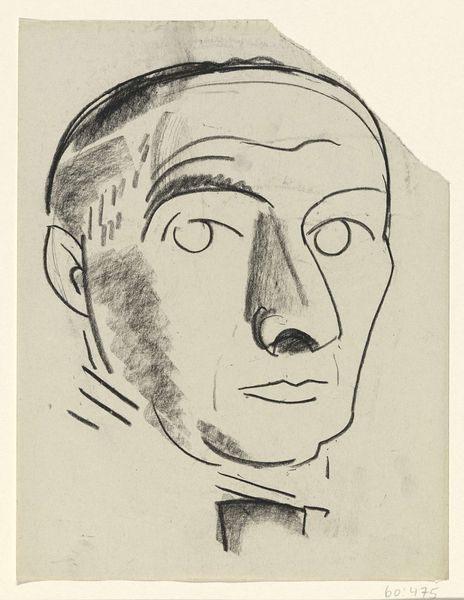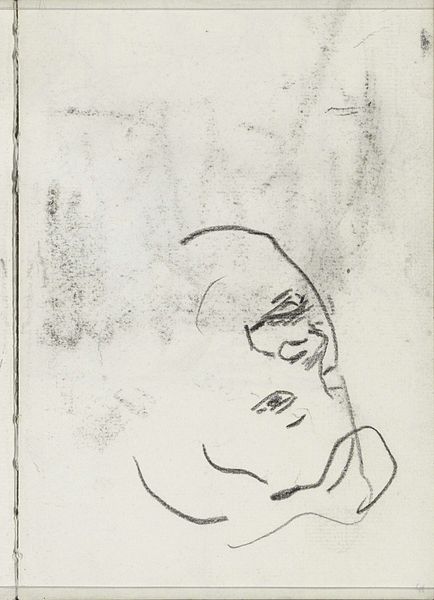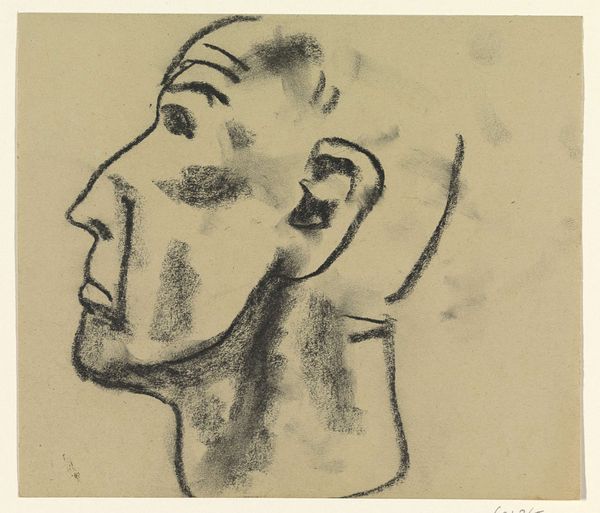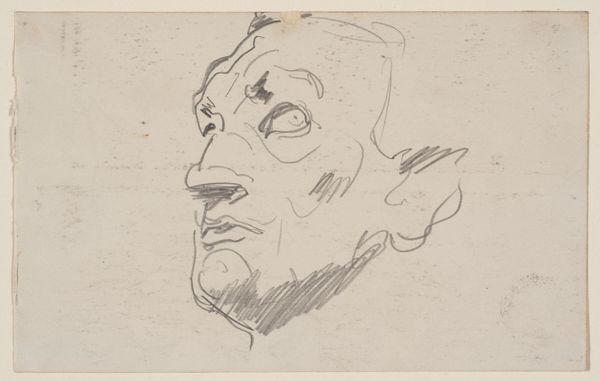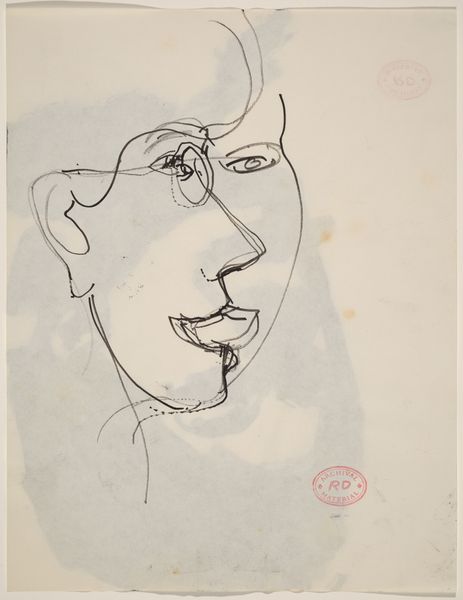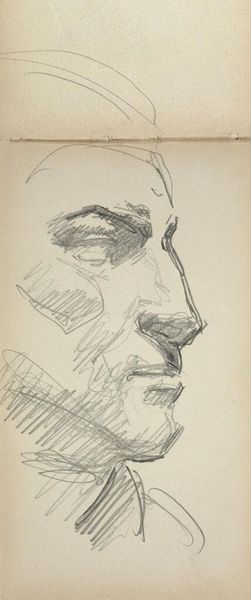
drawing
#
portrait
#
drawing
#
self-portrait
#
figuration
#
expressionism
#
line
#
portrait drawing
Copyright: Public Domain: Artvee
Editor: This is Egon Schiele's "Portrait of a Man," a drawing from 1914. The stark lines and the subject's intense gaze create a feeling of vulnerability and raw emotion. What stands out to you in this piece? Curator: For me, this drawing acts as a lens into the complex psychological landscape of early 20th-century Vienna. Consider the historical moment: anxieties surrounding masculinity were rampant. How does Schiele challenge conventional portrayals of men by revealing an exposed inner state? Editor: I see what you mean. There's a deliberate lack of idealization, right? Almost like an anti-portrait. Curator: Precisely! Think about the social expectations imposed on men at that time. What do you make of the raw, almost unfinished quality of the drawing, particularly given the expressionist style? Editor: It suggests a kind of authenticity, or perhaps a refusal to conform. I mean, expressionism often grapples with the alienation of the individual, doesn't it? Curator: Yes, but I would extend that: think about how the expressionistic lines may function as the portrait of society’s ills and oppressions. Schiele doesn't just present an individual; he embodies a critique of the socio-political structure. Where might we find that illustrated most? Editor: Maybe in the way he presents the almost grotesque features of the face, exaggerating features in such a raw and unfiltered manner. Is the "man" here representing a critique of society? Curator: Precisely, it also might reflect anxieties tied to societal collapse and war in pre-WWI Europe. What did you learn overall looking closer? Editor: I didn't realize the depths of critique that might be contained in these lines! Curator: Hopefully you have the space to ask critical questions about the narratives we construct around gender and power.
Comments
No comments
Be the first to comment and join the conversation on the ultimate creative platform.
